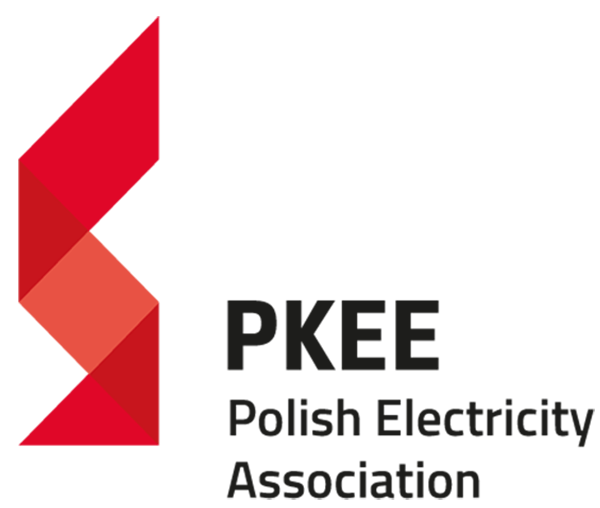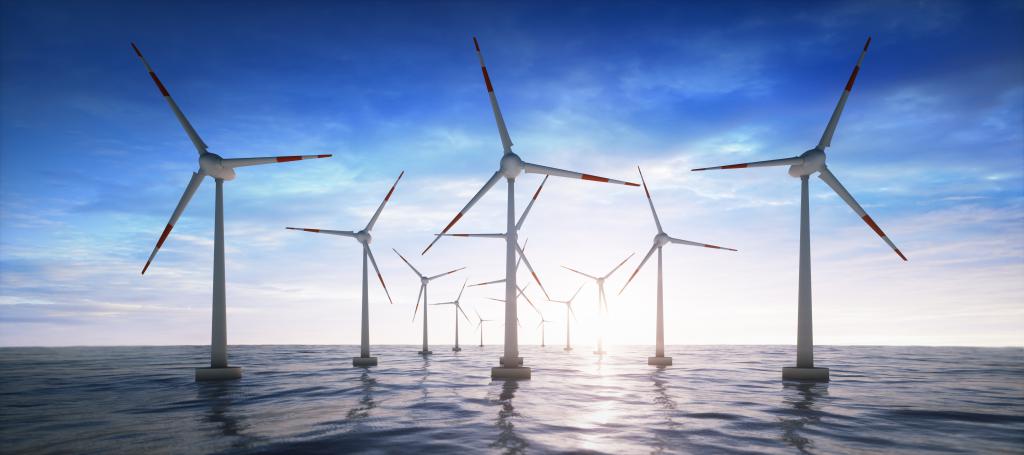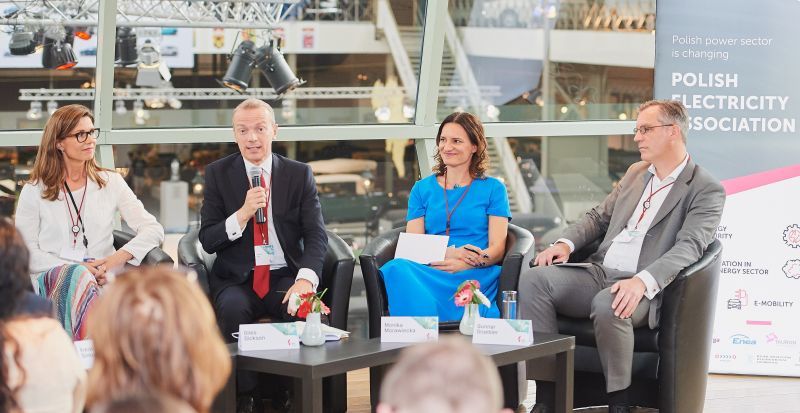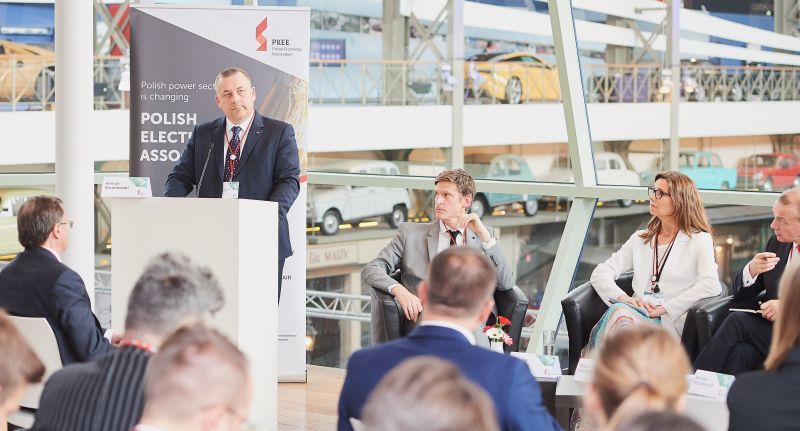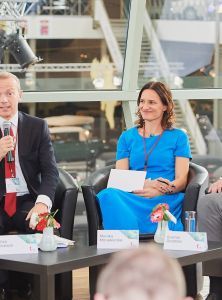The discussion of issues related to the development of the offshore in the Baltic Sea were the main goal of the second edition of the Summer Day event organized by the Polish Electricity Association (PKEE). A meeting with European Union officials, new members of the European Parliament, heads of companies, representatives of accredited organizations in Brussels and the press took place in the Belgian capital on 10th of July 2019.
The President of the Polish Electricity Association Henryk Baranowski, who opened the event, emphasized that the Polish energy sector has aspirations to make investments on the Baltic Sea. - PGE Baltica is planning to deliver first wind electricity by 2026. Through the Baltic Offshore project, we want to show our commitment to make the energy sector climate neutral – said Mr Baranowski. He also assured that other big projects are already on their way. - PGE is planning to build further 2,5GW of PVs. Moreover, Tauron announced to add 900 MW of onshore to its energy mix by 2025. Thanks to PKEE members new investments, we are pleased to say that the share of RES in power generation in Poland is estimated at 27% by 2030 – noted. PGE Baltica plans to deliver the first energy from offshore wind farms by 2026. Through projects on the Baltic Sea, we want to show our commitment to making the energy sector climate-neutral - he said. He also assured that other major projects are already in the pipeline. - PGE plans to acquire a further 2.5 GW from photovoltaics. Moreover, Tauron has announced that it will add 900 MW of onshore wind energy to its portfolio by 2025. We estimate that thanks to the investments of PKEE members, the share of RES in energy generation in Poland will reach 27 percent by 2030.- he pointed out.
During the high-level panel, its participants - Monika Morawiecka, President of the Management Board PGE Baltica, Pernille Weiss, Danish Politician and Member of the European Parliament, Giles Dickson, Chief Executive Officer of WindEurope, and Gunnar Groebler, Senior Vice President of Business Area Wind At Vattenfall - discussed local solutions for the challenges posed by the transformation of the European Union's energy sector. The debate focused on the development of wind energy on the Baltic Sea.
WindEurope CEO Giles Dickson when asked about the chances of developing Baltic Sea offshore admitted that the potential is huge. - The Baltic has strong and stable winds, less extreme conditions than the North Sea, shallow water depths and short distances to shore. There’s already 1.5 GW of offshore wind installed in the Baltic, 12% of Europe’s current offshore capacity. But we foresee this rising up to 9-14 GW by 2030. This will deliver clean, affordable electricity as well as a significant opportunity to create jobs and investments in coastal regions – explained. He expects that Poland will be a key driver in delivering these volumes. The Baltic Sea has strong and stable winds, less extreme conditions than the North Sea, shallow waters and short distances to shore. 1.5 GW of offshore wind power has already been installed in the Baltic Sea, which is 12% of current European offshore capacity. However, we foresee an increase in electricity generation from this source to 9-14 GW by 2030. This will not only provide clean, affordable electricity but also help create new jobs and attract investment in coastal regions - he explained. He added that he expected Poland to be a key implementer of these volumes.
Monika Morawiecka, President of the Management Board PGE Baltica, indicated that according to the estimates, by 2030 the Baltic Sea will become the second largest wind farm location in the world. This is a great opportunity also for Poland. - If we implement the plan to install more than 4,6 GW of capacity by 2030, we will become one of the biggest players in the European offshore sector - she said. - Moreover, it brings a great potential of economic development of the country, increasing the innovation of the Polish maritime, shipbuilding and steel industry and transformation towards a low-carbon economy - she stressed. If we implement our plan to install more than 4.6 GW of capacity by 2030, we will become one of the biggest players in the European offshore sector. she said. - It brings great potential for the economic development of the country, increasing innovation in the Polish maritime, shipbuilding and steel industries and the transformation towards a low-carbon economy - she stressed.
According to Gunnar Groebler Senior Vice President of Business Area Wind at Vattenfall the Baltic Sea is a very promising offshore wind market - The Polish 10 GW ambition for 2040 is particularly encouraging. Cross-border cooperation in the region will be key to utilize the full potential – he stated. Cross-border cooperation in the region will be key to fully exploiting this potential - he stated.
Pernille Weiss, Danish politician and member of the European Parliament, pointed out that the construction of offshore wind farms is a relatively young way of acquiring electricity. The pioneers of this technology are the Danes. - We opened the first Vindeby farm with a capacity of only 3 MW in 1991 – she reminded. The construction of offshore wind farms is a relatively new way of generating electricity. The pioneers in implementing this technology are the Danes. - We opened our first 3 MW Vindeby farm in 1991 - she recalled. The MP cited data that bycurrently on position The United Kingdom is the leader in terms of offshore power generated, followed by Germany and China. - And fourth place belongs to Denmark, with offshore electricity generation covering 44% of domestic consumption - she informed.
The event, which gathered nearly 300 people, was also attended by representatives of the Polish energy sector, including Jacek Kościelniak, vice-president of the management board for financial affairs of Energa and Tomasz Siwak, vice-president of the management board for the development strategy of Enea Wytwarzanie.
DOWNLOAD FILES
